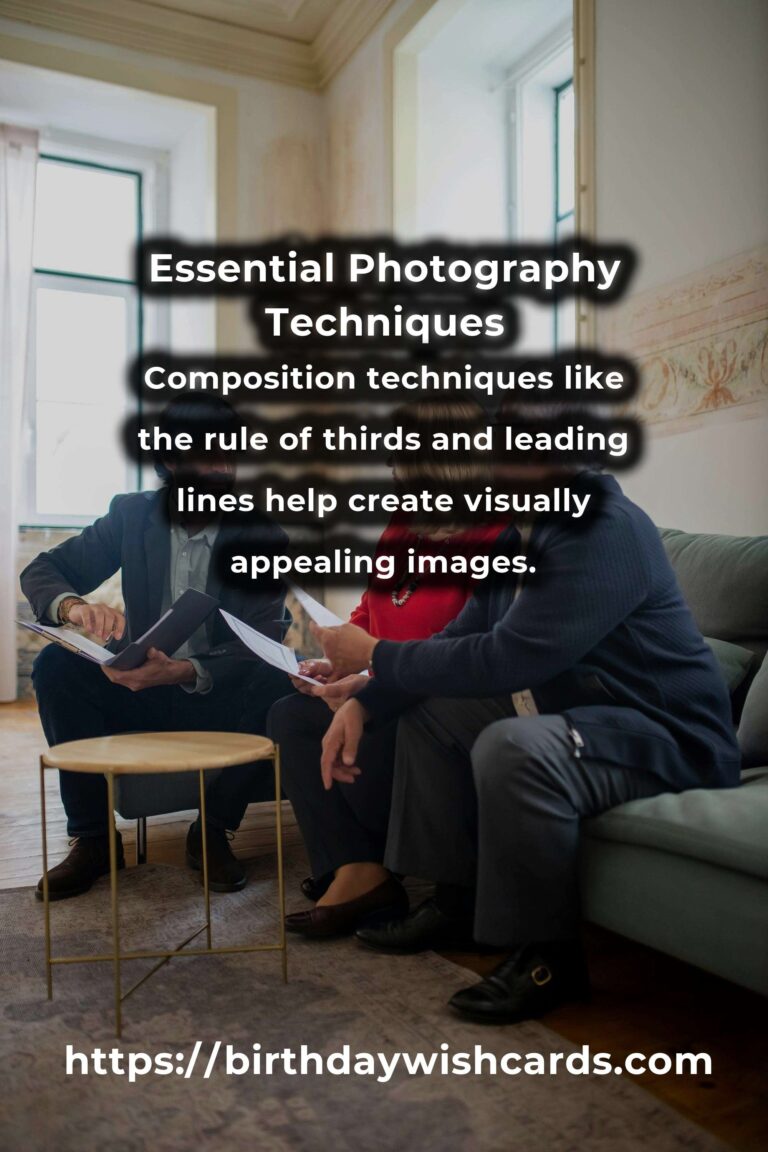
Photography is an art form that allows us to capture moments and tell stories through images. Whether you’re a budding photographer or someone looking to refine their skills, understanding the fundamental concepts of photography is crucial. In this article, we’ll explore 27 essential photography fundamentals that every aspiring photographer should know.
1. Understanding Exposure
Exposure is the amount of light that reaches your camera’s sensor. It is controlled by three elements: aperture, shutter speed, and ISO. Mastering exposure is key to creating well-lit and balanced images.
2. Aperture
Aperture refers to the opening in a camera lens through which light passes. It is measured in f-stops. A lower f-stop means a larger aperture, allowing more light to enter, while a higher f-stop reduces light entry.
3. Shutter Speed
Shutter speed determines how long the camera’s shutter remains open to let in light. Fast shutter speeds freeze motion, while slow shutter speeds can create motion blur.
4. ISO Sensitivity
ISO measures the camera sensor’s sensitivity to light. A lower ISO value is ideal for bright conditions, while a higher ISO is useful in low-light situations.
5. Composition
Composition is the arrangement of elements within a photograph. Techniques like the rule of thirds, leading lines, and framing help create visually appealing images.
6. Rule of Thirds
The rule of thirds involves dividing an image into nine equal segments by two horizontal and two vertical lines. Placing the subject along these lines or their intersections can enhance balance and interest.
7. Leading Lines
Leading lines are compositional elements that guide the viewer’s eye through a photograph. They can be roads, fences, or natural formations that draw attention to the main subject.
8. Framing
Framing involves using elements within a scene to create a ‘frame’ around the main subject, adding depth and focus to the photograph.
9. Depth of Field
Depth of field is the zone of sharpness in an image. A shallow depth of field isolates the subject by blurring the background, while a deep depth of field keeps more of the scene in focus.
10. White Balance
White balance adjusts the color temperature of your images, ensuring that whites appear neutral and colors are accurate under different lighting conditions.
11. Focus
Achieving sharp focus is critical in photography. Manual focus allows precise control, while autofocus systems can quickly lock onto subjects.
12. Lighting
Lighting is a crucial component of photography. Natural light, artificial light, and the use of modifiers like reflectors and diffusers can dramatically affect the mood and quality of images.
13. Natural Light
Natural light is a versatile and beautiful resource for photographers. Shooting during the golden hours—just after sunrise or before sunset—can produce soft, warm tones.
14. Artificial Light
Artificial light sources, such as flashes and studio lights, offer control over lighting conditions and can be used to create different effects.
15. Reflectors and Diffusers
Reflectors bounce light onto the subject, while diffusers soften harsh light, both helping to achieve desired lighting effects.
16. Metering
Metering is the process of measuring the brightness of a scene to determine the optimal exposure settings. Different metering modes are available to suit various lighting conditions.
17. Histogram
A histogram is a graphical representation of the tonal values in an image, showing the distribution of light and dark areas. It helps photographers assess exposure and make adjustments.
18. Lenses
Lenses are a vital part of photography equipment. Different focal lengths, such as wide-angle, standard, and telephoto, offer unique perspectives and are suited for various types of photography.
19. Wide-Angle Lenses
Wide-angle lenses capture a broader view, making them ideal for landscapes and architectural photography.
20. Telephoto Lenses
Telephoto lenses bring distant subjects closer, perfect for wildlife and sports photography.
21. Standard Lenses
Standard lenses, often with a focal length around 50mm, provide a natural perspective similar to human vision.
22. Macro Photography
Macro photography involves capturing small subjects in great detail, often using specialized macro lenses.
23. Post-Processing
Post-processing allows photographers to enhance and refine their images using software like Adobe Lightroom and Photoshop. Adjustments can include exposure, color correction, and cropping.
24. File Formats
Choosing the right file format is important for image quality and post-processing flexibility. RAW files retain more information, while JPEGs are compressed and easier to share.
25. Storage and Backup
Proper storage and backup of digital images are crucial to prevent data loss. External hard drives and cloud storage solutions provide reliable options.
26. Photography Ethics
Understanding and adhering to photography ethics is important. Respect for subjects, privacy, and cultural considerations should always be a priority.
27. Continuous Learning
Photography is an evolving field. Staying updated with new techniques, technology, and trends through workshops, online courses, and practice is essential for growth.
By mastering these photography fundamentals, you’ll be well-equipped to capture stunning images and express your creative vision. Remember, practice is key, so keep experimenting and exploring new perspectives.
Photography is an art form that allows us to capture moments and tell stories through images. Exposure is controlled by aperture, shutter speed, and ISO. Composition techniques like the rule of thirds and leading lines help create visually appealing images. Lighting is a crucial component of photography, affecting the mood and quality of images. Post-processing allows photographers to enhance and refine their images using software.
#PhotographyBasics #Exposure #Composition #Lighting #PostProcessing












